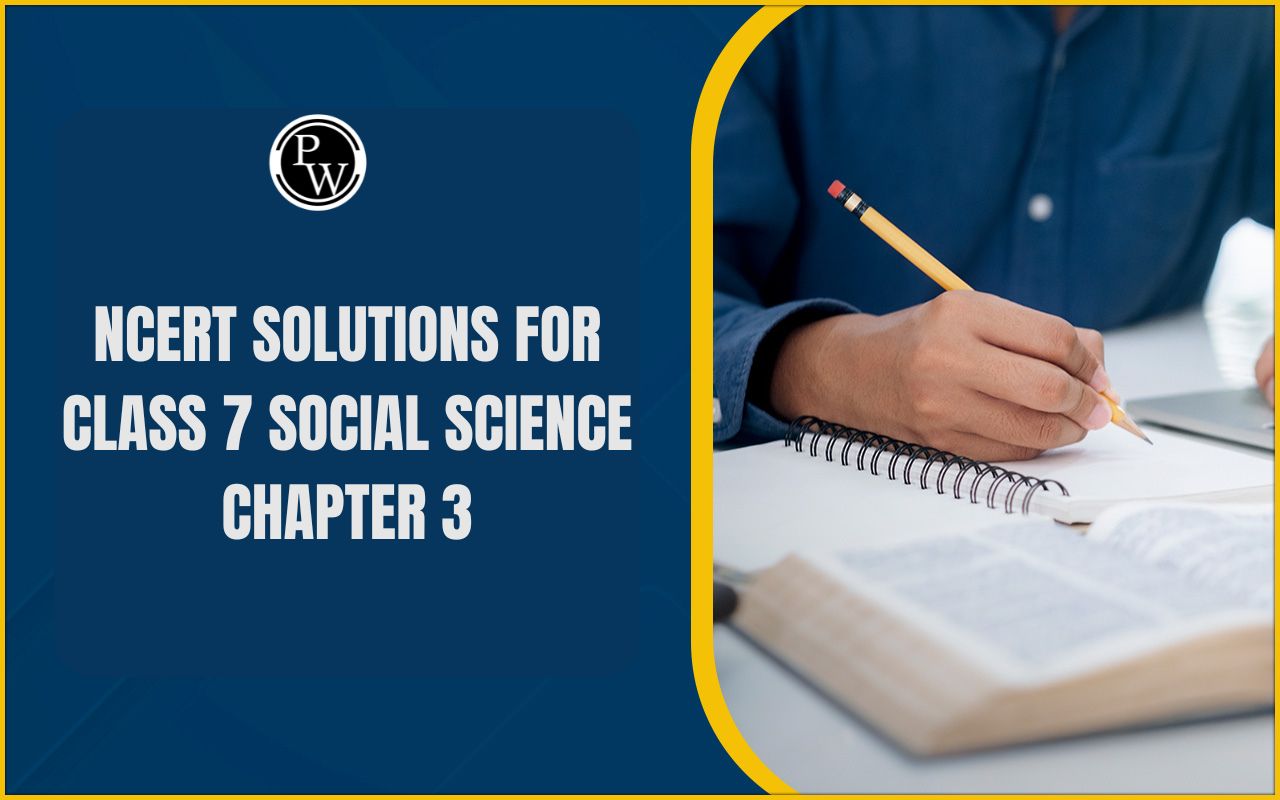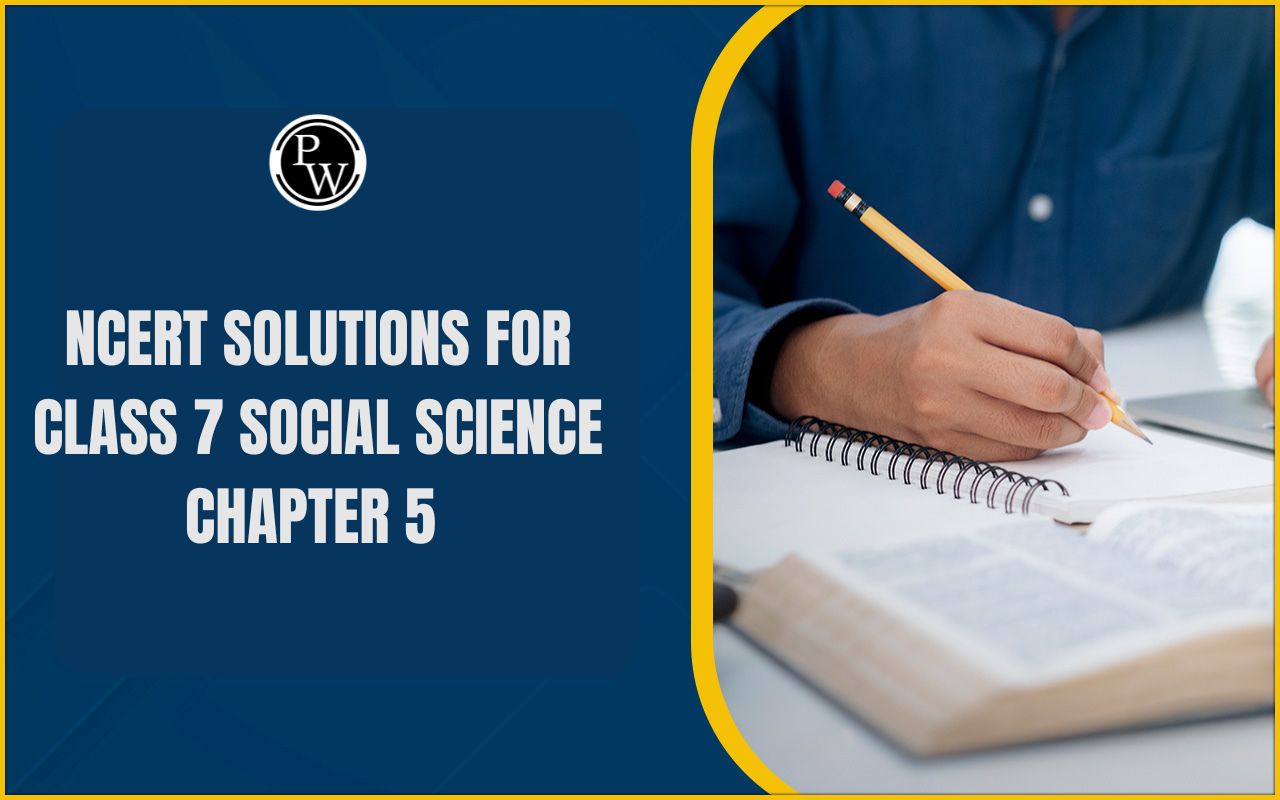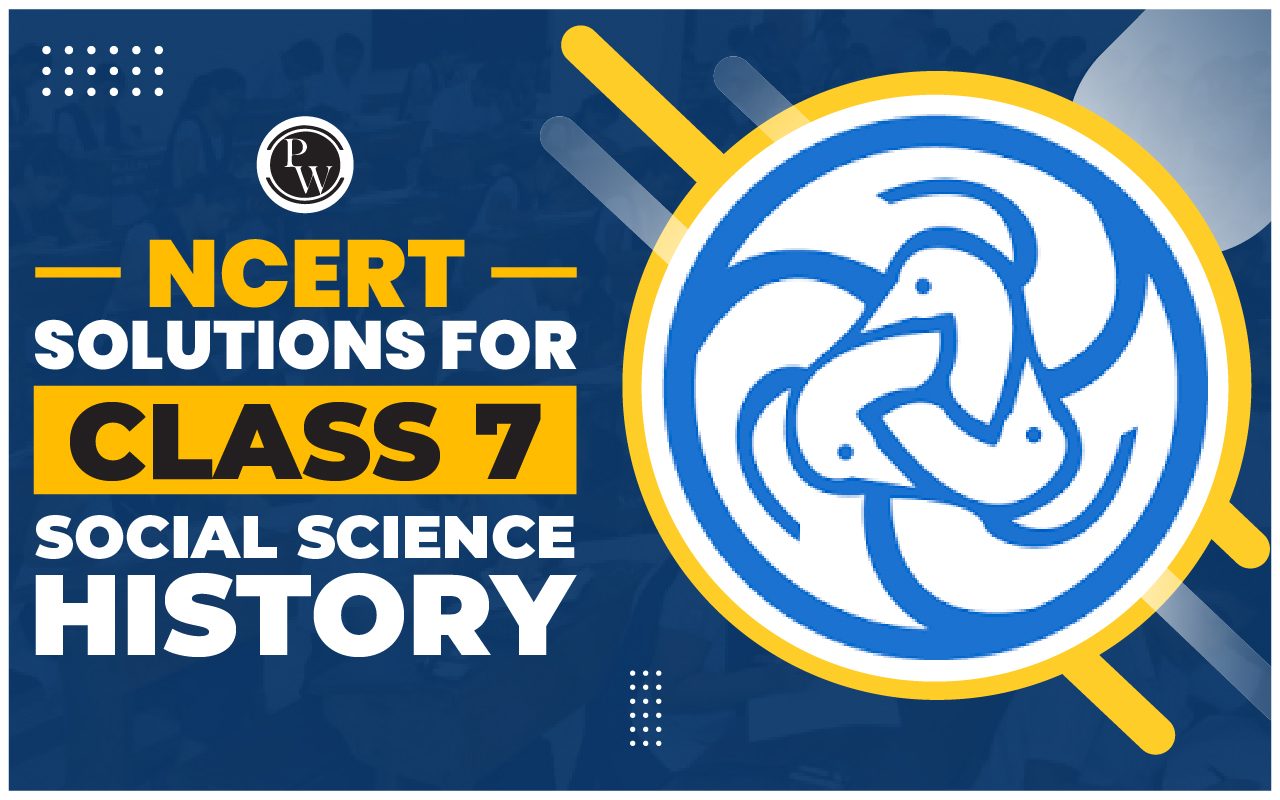
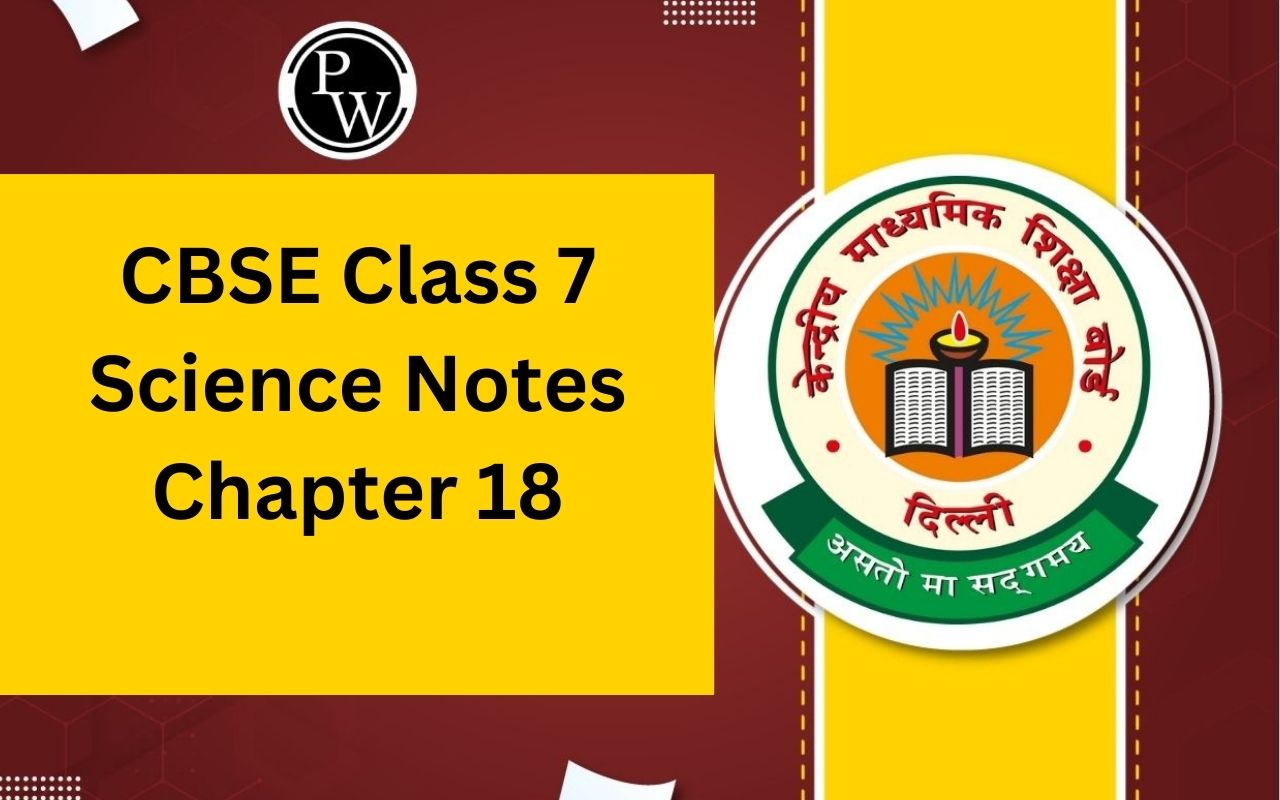
CBSE Class 7 Science Notes Chapter 18: CBSE Class 7 Science Notes Chapter 18 is available for free download in PDF format. It was created by knowledgeable science teachers using the most recent CBSE(NCERT) textbooks.
To improve your score on the CBSE board exam, sign up online for science tutoring for Class 7 NCERT Solutions here. Students can get free CBSE Solutions (NCERT) and other study materials from the website.CBSE Class 7 Science Notes Chapter 18 Overview
CBSE Class 7 Science Notes Chapter 18, carefully crafted by knowledgeable teachers here, is your indispensable study partner for a deeper understanding of this topic. These notes simplify Wastewater Story's complicated ideas into manageable chunks, which will make it easier for you to swiftly understand new ideas and finish last-minute questions with ease. You can gain a thorough comprehension of the subject matter and improve your study skills by devoting yourself to these notes.CBSE Class 7 Science Notes Chapter 18 PDF
Here we have provided CBSE Class 7 Science Notes Chapter 18 for the ease of students so that they can just download the pdf and use it easily without the internet. These CBSE Class 7 Science Notes Chapter 18 will help students understand the chapter better.CBSE Class 7 Science Notes Chapter 18 PDF
CBSE Class 7 Science Notes Chapter 18
Below we have provided CBSE Class 7 Science Notes Chapter 18 for the ease of students so that they can prepare better for their exams.Water Pollution
Water pollution is the phrase used to describe the contamination of water found on Earth in rivers, lakes, ponds, seas, and underground sources. Water that has been contaminated alters physically, biologically, and chemically, making it dangerous to consume or use for other purposes. Water pollutants are the compounds that contaminate water. Water pollution can have detrimental impacts on ecosystems, cause infections, and cause a decline in aquatic life, among other things.Major Water Pollutants
Sewage: A significant amount of sewage, or wastewater, is discharged into rivers and oceans, polluting their freshwater and rendering it unfit for human use because of the growth of various bacteria and other microbes. It not only harms the water body's aquatic life but also spreads serious illnesses like cholera, diarrhea, and typhoid. Industrial Chemical Wastes: Industries frequently dump dangerous chemicals into water bodies, contaminating the water with lead and mercury, among other things. Agricultural Effluents: Rain frequently carries fertilizers, pesticides, insecticides, and farm wastes into water bodies, where they contaminate the water. Oil Spills: Accidents and oil leaks into the water can result in oil spills, which can kill marine life. Thermal Wastes: Warm water from the thermal industry is frequently dumped into bodies of water, lowering the oxygen level. Additionally, it causes the water's temperature to rise, which is unsuitable for aquatic life. Untreated sewage, mining, and soil erosion are the sources of suspended solids. The sunlight that would normally reach the aquatic plants and animals is blocked by these suspended contaminants.What is wastewater?
Wastewater is defined as water that has been utilized and is no longer suitable for use. It's soiled water from drains, sinks, toilets, and laundry. Not everyone has access to clean water, even though we all need it.
As a result, before disposing of spent water in the ocean or any other body of water, it must be cleaned as well as preserved.
For this reason, the International Decade for Action on "Water for Life" was declared by the UN between 2005 and 2015.
Not everyone has access to clean water, even though we all need it.
As a result, before disposing of spent water in the ocean or any other body of water, it must be cleaned as well as preserved.
For this reason, the International Decade for Action on "Water for Life" was declared by the UN between 2005 and 2015.
What is sewage?
Sewage is the term used to describe wastewater from homes, workplaces, industries, hospitals, and other sources. Because it washes contaminants off of the roads, rainwater that rushes into the sewers during heavy downpours is also sewage. Sewage is a general term for any liquid waste. Pollutants in suspension as well as impurities mixed in are present in sewage water. Because they contaminate the water, these sewage-related pollutants are referred to as contaminants.
Water Freshens Up - An Eventful Journey
Sewers: Sewers are large and tiny pipes that are placed in buildings to transport sewage water. Sewerage: A sewer-based network or transit system is referred to as sewerage. From the place of production to the disposal site (treatment plant), it transports sewage water. It is made up of manholes spaced 50 to 60 meters apart. When two or more sewers cross paths or change directions, manholes are placed there. Every community has a system in place that makes it possible to remove waste from homes and businesses.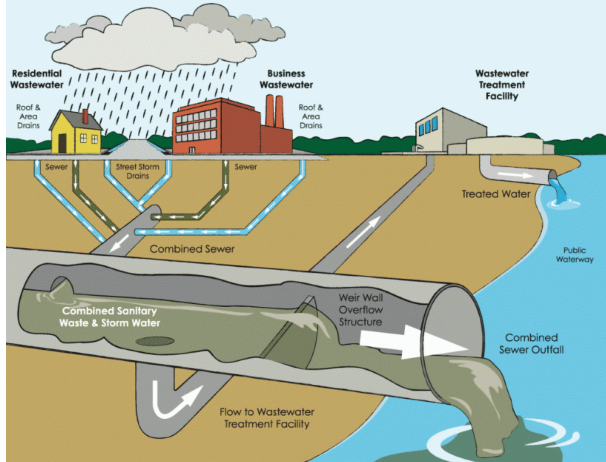
Wastewater Treatment Plant (WWTP)
Wastewater removal requires biological, physical, and chemical processes since it contains biological, physical, and chemical materials. The biological and physical methods used to remediate water 1. Debris Removal from Sewage Water: Big Items Initially, the wastewater is run through bar screens to filter out large items including plastic bottles, napkins, rags, cans, and sticks. 2. Sand and Dirt Separation A tank for the removal of grit and sand receives the wastewater next. At this point, the water's velocity is lowered. This permits the pebbles, sand, and soil to settle. 3. Solids Removal The water is currently cycling in a tank called the Clarifier, which has a slope in the middle. This allows solids, such as excrement, to sink to the bottom. We refer to this as Sludge. A scraper is then used to help separate the muck from the water. A skimmer is used to remove materials that float above the water, such as oil and grease. This stage produces water that has been clarified. The resulting sludge is put into a tank with anaerobic bacteria to break it down and create biogas. Next, the biogas is put to use as fuel.Removal of Suspended Sludge
Additional cleaning is also required for the cleared water. It is therefore transferred to an aerator where air is pumped in. As a result, aerobic bacteria can proliferate in this water. Food scraps, soap residue, organic debris, and other materials left in the cleared water are all consumed by the aerobic bacteria. After a few hours of settling, the waste materials in the water settle down in the tank. We refer to this as activated sludge. Sand drying beds or machinery are used to remove the water from the top of this sludge. After drying, the sludge can be utilized as manure. There are fewer pollutants and suspended particles in this cleaned water. It is safe to dispose of this water underground or into a body of water. It is therefore released underground, into a river, or the sea. It gets even cleaner from nature.Chemical Treatment of Wastewater
Even after being physically and biologically treated, dangerous compounds can occasionally still be found in the water. As a result, these substances are eliminated by employing disinfectants such as ozone and chlorine. Chlorine or ozone gas is frequently added to this water to perform chemical purification.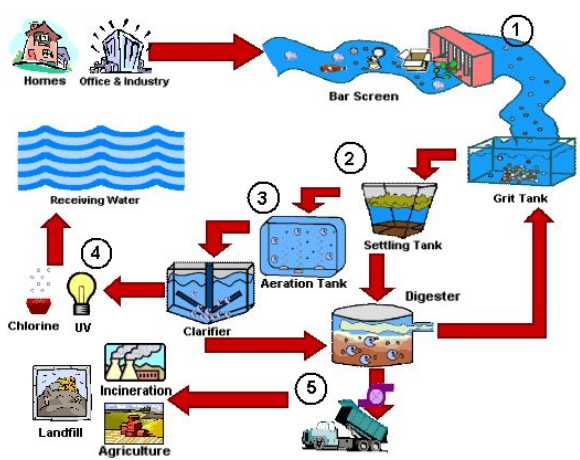
Eucalyptus Plant and Cleaning of Water
Pure water vapor is released by eucalyptus plants, which have a quicker rate of water absorption. They function as a natural water filter in this way. Therefore, planting Eucalyptus trees alongside the sewage ponds is recommended.
Why should we adopt better housekeeping practices and become an active citizen?
To ease the burden on WWTP, we ought to make an effort to decrease the amount of garbage generated in our homes. Tonnes of effluent can be challenging to clean. Sewage water can lead to several issues, including dangerous illnesses and unclean and unhealthy surroundings. Therefore, by implementing better housekeeping techniques, we can be more mindful of producing a minimal quantity of waste. Making sure that there are no open sewers or drains in our neighborhood is another way that we may take an active role in the community. Should we come across any, we ought to notify the municipality right away.What better housekeeping practices we can adopt?
Examining what is going down our drains is a smart approach to reduce the amount of sewage water. We might be able to lower the sewage if we dispose of our waste correctly. The following are some housekeeping habits we ought to implement: Instead of discarding the fats and oils from the dream, we ought to dispose of them in a dustbin. Fats and oils solidify and clog drains. It is very challenging to extract them from the water. Chemicals such as herbicides, insecticides, and medications shouldn't be disposed of down the drain. They can eradicate the water's purifying bacteria. Things that can clog drains, such as cotton, soft toys, tea leaves, and food scraps, should not be thrown down the sink. They should always be disposed of in the trash.
Sanitation and Disease
Sanitation is the state of people's health as it relates to the removal of human waste, sewage, and the availability of clean drinking water. Numerous diseases can be caused by contaminated drinking water and poor sanitation. Therefore, the goal of a sanitation system is to give us a clean atmosphere so that we can avoid getting sick. Several illnesses, including cholera, meningitis, hepatitis, polio, dysentery, and typhoid, can be brought on by poor sanitation and tainted water. Excreta from humans can contaminate water and soil and provide a health risk. Both surface and groundwater can become contaminated by it. Therefore, it is improper for anyone to urinate in public places.Alternative Arrangement for Sewage Disposal
These days, sewage is often disposed of using alternatives such as chemical toilets, compost pit toilets, and septic tanks. The wastewater or sewage is treated and disposed of by the on-site sewage treatments using natural processes. Where there isn't a central wastewater collection system, this system works well. Septic Tanks: Septic tanks are frequently buried in homes and other structures, including hospitals. By the use of anaerobic bacteria, it permits the breakdown of domestic sewage. Chemical Toilets: A chemical toilet uses chemicals to treat human waste and lessen its stench in a separate chamber. Composting Toilets: A composting toilet uses biological processes to handle human waste. The trash is broken down into compost by aerobic bacteria that live in a storage tank.Sanitation in Public Places
Bus depots, train stations, and airports are just a few of the bustling locations across our nation. big-scale events like fairs and festivals are frequently planned, drawing big crowds of people. This leads to the production of a lot of garbage, which, if improperly handled, can cause several illnesses or even an epidemic. As a result, we should all raise awareness of the importance of preserving sanitation in public areas as well as in our homes. We can contribute to the upkeep of public spaces' sanitation by implementing specific behaviors there, such as: We should always utilize the dustbins and refrain from throwing trash in public areas. It is inappropriate for us to spit in public.Benefits of CBSE Class 7 Science Notes Chapter 18
Take a fascinating tour through our Revision Notes for Science Class 7 Chapter 18, "Wastewater Story." These notes are a great resource, breaking down the complex world of wastewater management and providing a clear understanding of its importance to the environment. Conceptual Summaries: Quickly understand the fundamental ideas of wastewater management while deciphering the relevance and course of its treatment. Simplified Understanding: To improve comprehension, cut through the complexity of wastewater treatment and turn complex subjects into digestible insights. Last-Minute Wisdom: An effective study aid that guarantees a firm grasp of important wastewater management concepts, ideal for last-minute exam preparation. Improved Memory Retention: Consolidate your knowledge of important wastewater-related facts, reiterating them for efficient learning and recall.CBSE Class 7 Science Notes Chapter 18 FAQs
What are the steps of treatment of polluted water Class 7?
In the wastewater treatment plant, firstly wastewater is passed through bar screens which removes large objects like rags, sticks, cans, plastics etc. Water then goes to a grit and sand removal tank. The process of removing grit and sand is known as screening.
What is the importance of sewage treatment class 7?
The major cause of the spreading of various diseases like cholera, typhoid, etc is poor sanitation and contaminated drinking water. Water and soil pollution is caused by excreting in open areas. Untreated human excreta indirectly affect our health.
What do you mean by wastewater story?
It is a type of water which is contaminated by human use like washing of clothes, industrial discharge, commercial as well as agricultural activities.
🔥 Trending Blogs
Talk to a counsellorHave doubts? Our support team will be happy to assist you!

Free Learning Resources
PW Books
Notes (Class 10-12)
PW Study Materials
Notes (Class 6-9)
Ncert Solutions
Govt Exams
Class 6th to 12th Online Courses
Govt Job Exams Courses
UPSC Coaching
Defence Exam Coaching
Gate Exam Coaching
Other Exams
Know about Physics Wallah
Physics Wallah is an Indian edtech platform that provides accessible & comprehensive learning experiences to students from Class 6th to postgraduate level. We also provide extensive NCERT solutions, sample paper, NEET, JEE Mains, BITSAT previous year papers & more such resources to students. Physics Wallah also caters to over 3.5 million registered students and over 78 lakh+ Youtube subscribers with 4.8 rating on its app.
We Stand Out because
We provide students with intensive courses with India’s qualified & experienced faculties & mentors. PW strives to make the learning experience comprehensive and accessible for students of all sections of society. We believe in empowering every single student who couldn't dream of a good career in engineering and medical field earlier.
Our Key Focus Areas
Physics Wallah's main focus is to make the learning experience as economical as possible for all students. With our affordable courses like Lakshya, Udaan and Arjuna and many others, we have been able to provide a platform for lakhs of aspirants. From providing Chemistry, Maths, Physics formula to giving e-books of eminent authors like RD Sharma, RS Aggarwal and Lakhmir Singh, PW focuses on every single student's need for preparation.
What Makes Us Different
Physics Wallah strives to develop a comprehensive pedagogical structure for students, where they get a state-of-the-art learning experience with study material and resources. Apart from catering students preparing for JEE Mains and NEET, PW also provides study material for each state board like Uttar Pradesh, Bihar, and others
Copyright © 2025 Physicswallah Limited All rights reserved.
Get App




